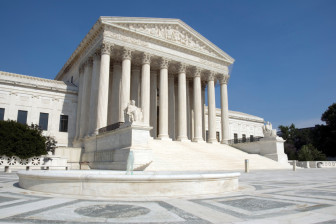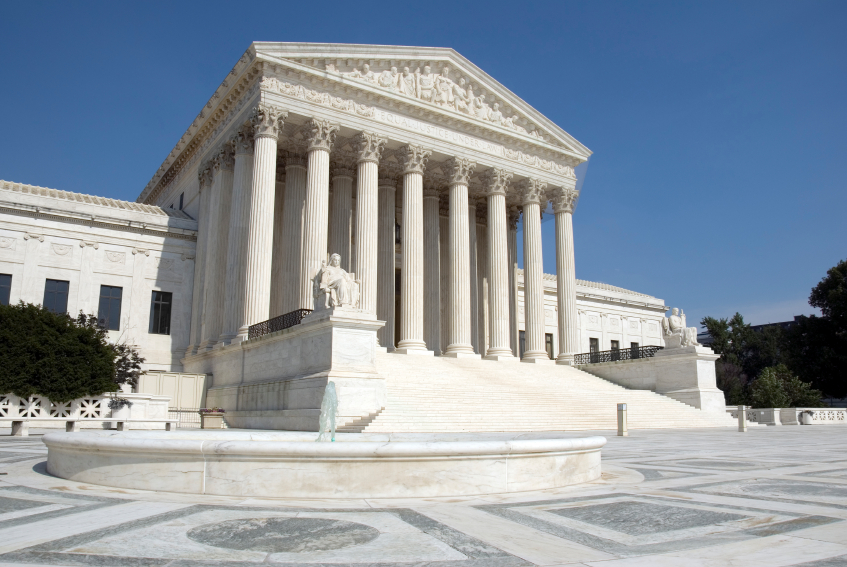 One summer night in 2003, 14-year-old Evan Miller and one of his friends discovered Cole Cannon, Miller’s neighbor, apparently passed out in his trailer. As Miller pulled $300 out of his neighbor’s wallet, Cannon suddenly regained consciousness. A fight among Cannon and the two boys ensued, Miller pummeling his neighbor with both his fists and a baseball bat. After covering Cannon in a bed sheet, the two returned to the trailer to clean up the blood. To conceal the crime, Miller and his friend decided to set the trailer ablaze; Cannon was alive, police investigators said, when the flames engulfed his mobile home.
One summer night in 2003, 14-year-old Evan Miller and one of his friends discovered Cole Cannon, Miller’s neighbor, apparently passed out in his trailer. As Miller pulled $300 out of his neighbor’s wallet, Cannon suddenly regained consciousness. A fight among Cannon and the two boys ensued, Miller pummeling his neighbor with both his fists and a baseball bat. After covering Cannon in a bed sheet, the two returned to the trailer to clean up the blood. To conceal the crime, Miller and his friend decided to set the trailer ablaze; Cannon was alive, police investigators said, when the flames engulfed his mobile home.
Miller was ultimately found guilty of capital murder and given a life without parole sentence. Following a series of denied appeals on the state level, Miller’s counsel filed a writ of certiorari to the U.S. Supreme Court, which granted the case a review in Nov. 2011.
On June 25, 2012, the high court officially ruled mandatory life without parole sentences (LWOP) for juveniles convicted of homicide are unconstitutional. However, it does not forbid judges from sentencing young defendants to life without parole if mitigating factors are considered. The decision applies to all offenders under the age of 18.
Miller v. Alabama represents the latest in a series of recent Supreme Court decisions that have declared certain juvenile offender penalties unconstitutional under the Eighth Amendment’s prohibition of cruel and unusual punishment. The court’s incremental progress began with Roper v. Simmons, which prohibited mandatory life sentences for all non-homicide youth offenses, and was followed by Graham v. Florida, which eliminated the death penalty for juvenile offenders. Miller takes the next step and, with Roper, has completely forbidden mandatory life without parole for juveniles convicted of all offenses, including murder.
The impact of the Miller ruling was immediate, and 29 states saw their mandatory sentencing statutes invalidated. As a result, the states faced the question of what to do with the hundreds of juvenile offenders originally given life sentences without the possibility of parole.
In the wake of Miller, three states -- California, Delaware and Wyoming -- passed legislation effectively eliminating juvenile life without parole sentences entirely, while a fourth legislative proposal to completely eliminate juvenile LWOP was advanced, but not made law, in Connecticut earlier this year.
Seven states maintained LWOP as a potential penalty even after Miller, although recent legislation within those states have similarly placed greater restrictions on the use of life without parole as a punishment for juvenile offenders. In both Pennsylvania and North Carolina, juveniles convicted of second degree murder can no longer be given LWOP sentences, while Arkansas, Louisiana, Nebraska and Utah have all retooled their state laws to allow increased parole opportunities for juveniles with homicide offenses. Although South Dakota hasn’t enacted legislation that allows for automatic parole opportunities for juvenile lifers, recent changes to state law have given more leeway to judges, who now have more options in sentencing juveniles with first- and second-degree homicide convictions.
Mandatory minimum sentence legislation was defeated in Florida, Illinois, Missouri, Alabama and Washington.
The Miller ruling also proved problematic for several other states, as legislators scrambled to update their state’s laws. In Iowa, Gov. Terry Branstand’s call to commute the sentences of the states’ juvenile lifers to 60 years to life led to a state Supreme Court case, and Texas has struggled to amend a gap in its code involving 17 year olds convicted of murder. The Minnesota Supreme Court ruled in May that the Miller holding cannot retroactively apply to juveniles given mandatory life without parole sentences.
A year after the Supreme Court ruling, some juvenile justice experts and advocates believe Miller v. Alabama sets the stage for more progressive, state-level juvenile sentencing laws.
“What Miller does is that it says, first of all, that yet again kids are different,” said Jody Kent Lavy, director and national coordinator of the Campaign for the Fair Sentencing of Youth. “We cannot treat young people the same way we treat adults in the context of criminal law.”
With the ruling in effect, young people facing life in prison now have the ability to bring forward evidence in court of mitigating factors that may have contributed to their criminal behavior, such as living environments and maturity, Lavy said.
“That, previously, was not required and it was not considered necessarily relevant before imposing these sorts of extreme sentences,” she said.
The ruling, she said, applies to all states, even those where the age of criminality is lower than 18. “They have to revise their policy as it relates to 17-year-olds to ensure those young people have the same protections in place that Miller required,” she stated.
According to Lavy, a majority of juvenile offenders serving life without parole sentences were in states that employed the now-invalidated mandatory statutes. She believes with the new provisions resulting from Miller that there will be fewer people receiving LWOP sentences as juveniles because judges will now have the discretion to impose other sentences.
Liz Ryan, president and CEO of the Campaign for Youth Justice, said the Miller v. Alabama ruling may have major implications on state policymaking in the future, particularly regarding the practice of trying juvenile offenders in adult courtrooms.
“In the Miller case, one of the outcomes is that they really rejected the notion of making kids eligible for life without parole sentences,” she said. “So this idea of sending kids automatically to adult criminal court, I think, could hopefully, potentially impact the broader notion of kids being automatically [tried as adults.]”
Every state, to some capacity, allows for the criminal prosecution as adults of juvenile offenders, she said.
“Some states allow kids to be sent to adult criminal court on the motion of a judge, and that’s been the traditional way,” Ryan said. “In a number of states, depending on your age and what you’re charged with, you can be placed in adult criminal court.”
Although the Miller v. Alabama ruling does not require states to change their laws regarding the criminal prosecution of juveniles, Ryan believes the Supreme Court holding may influence states to re-examine their policies.
“There’s a direct impact on cases [involving] kids that are for re-examination under Miller, but I think also that a number of states are sort of more broadly looking at the issue of why they’re treating kids in adult criminal courts,” Ryan said. “And some of the methodology that the court considered in this case ought to be considerations ... in any type of sentencing.”
Likewise, Lavy believes the Miller ruling may serve as a precursor to new state-level juvenile justice reforms.
“What I think is important about the Miller decision is that it reaffirms what the Supreme Court has said previously in Roper, Graham and J.D.B. v. North Carolina, which is that youthfulness matters,” Lavy said. “As a result, in the legislatures there have been discussions about ways to not only comply with Miller in the narrowest form, but also to extend the reforms to any child convicted of a crime in adult court.”
In Lavy’s opinion, the notion that “kids are different” -- which she considers a central takeaway from Miller v. Alabama -- has taken hold among policymakers, with recent reforms going beyond merely eliminating long sentences for juveniles. Lavy points to recent legislation in Delaware as an example of how states can construct new ways to hold youth accountable for their offenses without implementing life in prison sentences.
“They took life without parole off the books for the most serious crimes,” she said, “and replaced it with a 30-year minimum, and then for any other youth who was tried in adult court, they now have review after 20 years.”
Young people, Lavy said, differ from adults and should be viewed differently in the context of the Constitution. She considers the Miller ruling an incremental, yet critical, step forward toward broader juvenile justice reform.
“I think that one of the things we as a community need to be looking to is models for how we hold young people accountable for serious crimes in ways that reflect their age and capacity to change,” she concluded. “And I think policymakers thinking about Miller would be well-served to look to those sorts of models.”


The problem is that judges, generally and Pardons boards, still treat juveniles as adults and re-sentence them with the most severe sentences in violation of the concept that juveniles are to be treated differently and more leniently because of their inability to control their behavior as adults do. It will take a long time before more liberal judges take office, who accept the idea of a separate juvenile justice system.